#Kate Isitt
Explore tagged Tumblr posts
Text
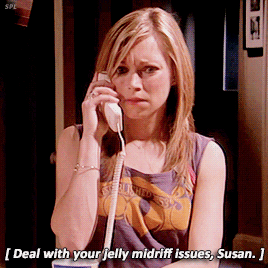
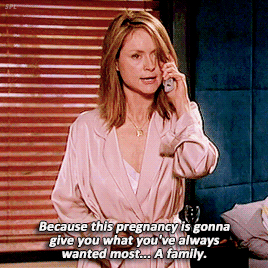


Susan, this pregnancy is going to change your life. It's going to give you a baby, motherhood, and a certain future with Steve. And yes, maybe a jelly middriff.
COUPLING 4.02 Nightlines
#couplingedit#ginabellmanedit#Coupling#Gina Bellman#Jane Christie#kate isitt#sarah alexander#susan walker#sally harper#spledits#mine#mine: coupling#my gifs#sitcomedit#quicklings#wistfulwatcher#sophiedevreaux#trueloveistreacherous#tuserjen#usermibbles#fourteenthofaugust#rogerhealey#usersitcom#filmtvcentral#userbbelcher#userthing#nostalgiatvdaily#tvmoviegifsdaily#tvfilmsource#yes I did make this entire gifset because of Gina yelling AND BREASTS
46 notes
·
View notes
Text

Bad movie I have Half Light 2006
#Half Light#Demi Moore#Henry Ian Cusick#Jordan El-Balawi#Kate Isitt#Nicholas Gleaves#James Cosmo#Joanna Hole#Therese Bradley#Hans Matheson#Mickey Wilson#Polly Frame#Ceit Kearney#Nichola Bee#Jamie Edgell#Anne Smith#Isla Hampson#Helen Crerar
5 notes
·
View notes
Text
Sally was always my favorite Coupling character and this scene is literally one I have never forgotten and (apart from her frenzied search of Patrick’s cupboard of sex tapes) is probably my favorite:








16 notes
·
View notes
Photo










Peter Sullivan in Peak Practice as Richard Beamer -1998
#peter sullivan#petersullivan#sullivanarmy#peakpractice#richardbeamer#All Fall Down#1998#Gary Mavers#Adrian Lukis#Saskia Wickham#Kate Isitt
1 note
·
View note
Photo

Jeremy Clyde, Richard Lumsden, Imelda Staunton, Patrick Barlow and Kate Isitt in “Is It Legal?”
1 note
·
View note
Photo

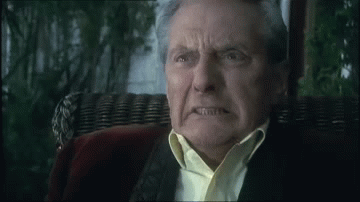

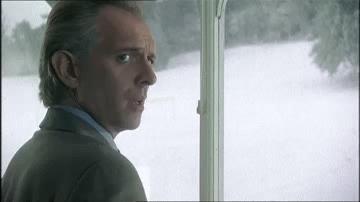

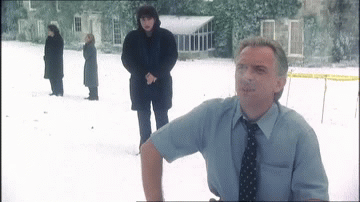
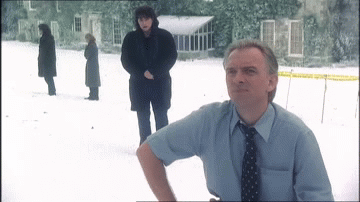
#gif#jonathan creek#rik mayall#francis matthews#murray melvin#alan davies#caroline quentin#kate isitt
18 notes
·
View notes
Photo
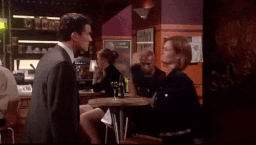
I really thought this had to already exist somewhere, but could never find it. For shame internet! It seems pretty useful.
15 notes
·
View notes
Photo
“I intend this breast satirically.“
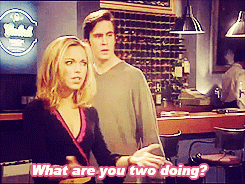


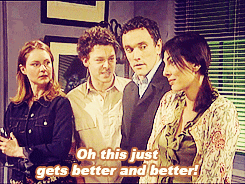




one coupling gifset per episode ∟ 1x01 flushed
#coupling#Sarah Alexander#kate isitt#gina bellman#richard coyle#ben miles#jack davenport#coupling uk#bbc coupling
229 notes
·
View notes
Text
Information on my 7 selected public figures:
The Teacher and Editor - Nellie Jane Peryman (1868-1947)
Our oldest recording of a voter of 1893 is that of Nellie Peryman, who was born Ellen Jane Levy in Wellington in 1868.
Her voice was recorded in 1943 in the lead up to a general election – which also coincided with the 50th suffrage anniversary. She was something of a public figure, as the long-time editor of the Women’s Christian Temperance Union newspaper, “The White Ribbon”, and a regular newspaper correspondent writing on women’s issues, such as the need to have indecent assault cases heard in closed courts and a public speaker on the evils of "the drink traffic."
She was a grand-daughter of Solomon Levy, a founding member of Wellington’s Jewish community, who had arrived with the New Zealand Company in 1840. Her father Alfred Lipman Levy had married a Wesleyan (Methodist), Mary Ann Mordin in 1867 and it appears Nellie was also a Wesleyan.
As she explains in her recording, she was a teacher at Petone School when she voted in 1893. She refers to helping gather names for the suffrage petitions and the difficulty getting some women to sign. Her name appears on the earlier 1892 suffrage petition, and she may have already been a member of the W.C.T.U. at that point.
In 1897 Nellie married Reverend Samuel Huxtable Dewsbury Peryman, a Wesleyan minister. His mother and sister-in-law had both also signed the suffrage petition in Canterbury. Nellie remained active in leadership roles of the W.C.T.U. and became editor of its monthly paper “The White Ribbon” in 1913, a position she held until 1945.
In the 1925, Nellie Peryman wrote an article and short booklet entitled “How We Won the Franchise in New Zealand.” In it she wrote the lines which were chosen in 1993 to appear on the Kate Sheppard Suffrage Memorial that was erected in Christchurch to mark the centenary of women getting the vote: "We, the mothers of the present, need to impress upon our children’s minds how the women of the past wrestled and fought, suffered and wept, prayed and believed, agonised and won for them the freedom they enjoy today..”
"The Teacher And Editor - Nellie Jane Peryman (1868-1947)". Nga Taonga Sound And Vision, 2018, https://ngataonga.org.nz/set/item/451. Accessed 27 May 2018. Image credit: The White Ribbon, April 1945. Courtesy Alexander Turnbull Library.
The Centenarian - Helen Augusta Percival Dixon (1862-1969)
Fame came to Helen Dixon at the end of her life. She was aged 101 at the time of her radio interview in 1963, and every year newspaper articles were published to mark her birthday, until she finally passed away in 1969 at the age of 107, the oldest Pākēha New Zealander at the time.
She was born Helen Augusta Percival Jordan in Parewanui, near Bulls in 1862.
She married Charles Dixon in 1885, and lived ‘in most cities of New Zealand’ before settling in Auckland in the 1920s.
In her interview she chuckles infectiously when recalling that men felt “very wild” about women getting the vote in 1893. She notes they were worried women would vote for Prohibition and close all the hotels, observing wryly that would have been ‘very awkward.’
In a newspaper article marking her 102nd birthday, she confessed she herself had voted for Prohibition in the election of 1893, ‘” I must have thought it was my duty or something, but I never did it again,” she says. The same article notes that she was waiting for delivery of a half-gallon of port, her regular birthday present from her wine merchant! 1.
Image credit: Auckland Weekly News 21 July 1969. Courtesy NZ Herald/NZME
"The Centenarian - Helen Augusta Percival Dixon (1862-1969)". Nga Taonga Sound And Vision, 2018, https://ngataonga.org.nz/set/item/451. Accessed 27 May 2018.
The Wesleyan - Winifred Mona Hills (1869-1970)
As she recalls in her 1963 radio interview, Winifred Hills was born in Greymouth in 1869, ‘at the time when all the miners were there.’ She was one of the 16 children of Wesleyan (Methodist) minister Reverend William Cannell and his wife Annie.
The family moved often (as was the practice for Methodist ministers), living in seven other centres after Greymouth, until by the time the suffrage petition was circulating the country in 1893, they were in Hawera, where William was the local minister. Annie Cannell and three of her daughters, Winifred, Gertrude and Elsie signed the petition in Hawera, and the following year Winifred married farmer Jesse Hills.
Wesleyan church members made up about 10 percent of the population in late 19th and early 20th century New Zealand. The church became involved in many social justice causes and its followers were enthusiastic campaigners for Temperance. The church urged members to avoid the dangers of alcohol personally, as well as rallying for local and national prohibition. This lead the church to also support of the campaign for votes for women. The reasoning went, that if women could vote, they would vote to control the sale of alcohol for the good of their families – and for this reason the church put a lot of energy into the women’s franchise movement.
The Methodist Church Archives have found 34 women who signed the 1893 petition can be linked directly to ministers from their church: wives, daughters, sisters, mothers and even a daughter-in-law and a niece. Thousands more women were probably influenced to sign, at least in part, due to the Temperance campaign. This was led by dynamic speakers such as Reverend Leonard Isitt who toured the country continually, preaching on the evils of liquor and its role in domestic violence against women and children, and the breakdown of families.
"The Wesleyan - Winifred Mona Hills (1869-1970)”. Nga Taonga Sound And Vision, 2018, https://ngataonga.org.nz/set/item/451. Accessed 27 May 2018. Image courtesy of Audrey Fenn www.thelockedjournal.com
The City Seamstress - Arabella Manktelow (1871-1963)
Arabella is one of three elderly women recorded in 1963 remembering voting in the 1893 election.
She was 92 at the time of the interview, but her views on why women were keen to support the Temperance movement are clear and insightful. She says like many women, she voted for Prohibition initially: “Not so much to have liquor prohibited, as to keep it in check, as to get laws for closing hours… They could see what it [alcohol] was doing to a new country. It was ruining it. A few people were getting rich, but the majority were getting poor.”
She comes across in the interview as something of a feisty character, and is cutting in her opinion of Premier Richard Seddon, calling him ‘an old hypocrite’ as he opposed women getting the vote but then congratulated them when the law was passed, saying he “always sided with the winning side.”
Arabella was born in London in 1872 and came to New Zealand with her family, arriving in March 1876 after a harrowing voyage in which their ship was dismasted, becalmed and the crew mutinied. The family settled in Hamilton, but Arabella moved to Auckland around 1890, and worked as a dressmaker. She signed the 1893 suffrage petition while living in Mackelvie Street, Ponsonby.
According to Manktelow family history, her grandmother was French and Arabella was said to have inherited both her skill as a seamstress and her good looks. She is also described as not liking men and never married. 1.
Arabella moved to Mangere to live around 1919, when this was still a largely rural area. She was active in the Women’s Division of the Farmer’s Union and maintained a well-known, old-world garden at her property “The Acre.” She moved back into Auckland city in later life and passed away less than a month after her interview was recorded in October 1963.
"The City Seamstress - Arabella Manktelow (1871-1963)”. Nga Taonga Sound And Vision, 2018, https://ngataonga.org.nz/set/item/451. Accessed 27 May 2018. Image courtesy of Bill Manktelow
The Farmer - Helen Mary Wilson (1869-1957)
Helen Wilson and her mother Emma Ostler, both signed the 1892 and 1893 suffrage petitions in Horowhenua and voted in 1893. Helen had recently married and wrote in her autobiography that she was nailing shingles onto the roof of her house when she first met her future husband, Charles Kendall Wilson.
She and her mother had established a farm on their own near Levin in 1888. Her father had died in 1879 and the family of four had lived a precarious existence in the South Island for several years, supported by Helen's teacher's salary, until she won 20 acres in a land ballot and the two women became the first settlers on the Levin block.
Helen’s entry in the Dictionary of New Zealand Biography notes: “Through hard work they established a valuable property. They fenced, dug, cleared the land and extended their small dwelling. Emma Ostler became a prominent Levin businesswoman and a leader of the local Women's Christian Temperance Union and women's suffrage campaign. Helen was sympathetic to women's suffrage but had no time for some within the movement whom she saw as extremists.” 1
In the 1920s she became a founding member of the Women's Division of the New Zealand Farmer's Union (a forerunner of Federated Farmers). Helen’s husband entered politics with the Reform Party and they continued farming in several locations in the North Island. Helen eventually served as Dominion President of the W.D.F.U. in the 1930s and during the Depression was involved in setting up boards to tackle women’s unemployment in urban centres. ,She was awarded an O.B.E. in 1937.
In 1950, although losing her sight and hearing, she published her autobiography, My First 80 Years which was very well-received as a story of pioneer life and rural New Zealand around the turn of the 20th century. It was about this time that this radio talk by her entitled “The Status of Women” was recorded. In this excerpt she recalls the criticisms of those who opposed women getting the vote in 1893.
Bronwyn Jones. 'Wilson, Helen Mary', Dictionary of New Zealand Biography, first published in 1996. Te Ara - the Encyclopedia of New Zealand.
"The Farmer - Helen Mary Wilson (1869-1957)”. Nga Taonga Sound And Vision, 2018, https://ngataonga.org.nz/set/item/451. Accessed 27 May 2018. Image: Helen Wilson, 1938 from "My First 80 Years" New Zealand Electronic Texts Collection.
The Suffragist's Daughter - Hilda Kate Lovell-Smith (1886-1973)
“Kitty” as she was known, is the odd-woman-out in this collection of recordings. Born in 1886 she was only a child when the 1893 election was held, certainly too young to vote. But she is included here because of her first-hand recollections of the suffrage campaigning by her mother, Jennie Lovell-Smith - and her mother’s good friend, Kate Sheppard.
Kitty was born at Riccarton in Christchurch, the third daughter of ten children of Jennie and her husband, William, a printer. Both parents were close friends of Kate Sheppard, whose name was also given to Hilda, who was known as ‘Kitty’ for most of her life. Sheppard lived with the family for many years and after Jennie’s death in 1924, she married William, which made her Kitty’s ‘step-mother’ (although Kitty was 38 years old by that time.)
Given her upbringing, Kitty Lovell-Smith could not help but grow up with a belief in equality for women and she became active in the National Council for Women which her mother and Kate Sheppard had helped found in 1896. She was secretary of the N.C.W. from 1919 -1927 and President in the 1950s. She was also involved in other women’s organisations such as the Y.W.C.A. and Soroptimists.
In this excerpt from a radio interview from 1968 she recalls her mother’s campaigning with the suffrage petition in Canterbury and the momentous day in September 1893 when the Act was passed giving women the vote.
"The Suffragist's Daughter - Hilda Kate Lovell-Smith (1886-1973)”. Nga Taonga Sound And Vision, 2018, https://ngataonga.org.nz/set/item/451. Accessed 27 May 2018. Image: Portrait by H.H. Clifford. Supplied by Margaret Lovell-Smith
Sue Kedgley – Women’s protester
Sue Kedgley was a leading spokesperson for the women’s liberation movement in New Zealand. She initiated Auckland University’s women’s liberation group and fought for change on multiple fronts, spearheading protest marches, giving public talks and advocating for changes in the law. She wrote numerous columns on feminist issues and in 1972 published her first book, Sexist society.
Like the early suffragists, second-wave feminists employed a variety of tactics to fight for change. An early protest march highlighting the lack of progress since women won the vote in 1893 ended under the statue of Queen Victoria in Auckland’s Albert Park, a destination chosen to symbolise the need to move on from Victorian attitudes towards women.
In the early 1970s Auckland University was a hotbed of activism on a wide range of issues, including the Vietnam War, nuclear testing in the Pacific and Māori land rights. In this environment Sue Kedgley and the Auckland women’s liberation group initiated many of New Zealand’s first second-wave feminist events, including a 1972 visit by Germaine Greer – famous for her ground-breaking book, The female eunuch.
Along with Connie Purdue, Kedgley was instrumental in establishing the National Organisation for Women (NOW) and helped organise the first United Women’s Convention in Auckland in 1973, timed to coincide with the 80th anniversary of women’s suffrage. Fifteen thousand women (and a few men) gathered to debate key issues.
In the early years of women’s liberation, feminist groups aimed to be inclusive of all women, whatever their class, culture, beliefs or sexuality. They wanted to raise awareness of women’s oppression and encourage solidarity amongst women. Equal pay, freely available child-care, free contraception, legalised abortion, and an end to sexism were all on the agenda. Many feminists formed leaderless groups in which decisions were made by consensus. Those involved felt that they were on the verge of changing the world.
Despite this inclusive approach, internal divisions soon emerged. The 1973 United Women’s Convention was split over the emergence of lesbian groups focused on their right to sexual freedom, and over abortion. When a vote confirmed that the majority favoured legalised abortion, 26 women opposed to abortion lobby walked out.
Sue Kedgley continues to fight for women’s rights and equality for all. She worked on women’s issues at the United Nations in New York and has had careers in television and politics at the national and local levels. In 2016 she received the New Zealand Women of Influence Award for Diversity in recognition of her work towards greater gender diversity in the workplace.
In a 2017 interview Kedgley declared that there was much ‘unfinished business’, as women continued to face sexist advertising, domestic violence and pay inequity. For her, feminism is intertwined with environmental issues, health, consumer rights and food safety issues.
"Sue Kedgley". Nzhistory, 2018, https://nzhistory.govt.nz/media/photo/sue-kedgley. Accessed 13 Mar 2018. Photographer: Marti Friedlander
30/05/18
0 notes
Photo






#coupling#jack davenport#sarah alexander#kate isitt#ben miles#richard coyle#resevoir dogs#*#coupling*
1K notes
·
View notes
Photo




419 notes
·
View notes
Photo




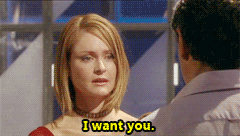


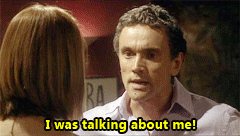
338 notes
·
View notes
Photo




Her reaction to that comment. They really are kind of perfect for each other.
#coupling#Kate Isitt#Ben Miles#Steven Moffat#Patrick Maitland#Sally Harper#patrick and sally#aflawedfashiongif#affcoupling
327 notes
·
View notes
Photo





Is It Legal? - ITV / Channel 4 - September 12, 1995 - December 9, 1998
Sitcom (21 episodes)
Running Time: 30 minutes
Stars:
Richard Lumsden as Colin Lotus
Jeremy Clyde as Dick Spackman (Series 1-2)
Imelda Staunton as Stella Phelps
Patrick Barlow as Bob Birch
Kate Isitt as Alison
Matthew Ashforde as Darren
Nicole Arumugam as Sarah Chivers
#Is It Legal?#TV#ITV#Channel 4#1990's#Sitcom#Richard Lumsden#Jeremy Clyde#Imelda Saunton#Patrick Barlow
0 notes
Photo







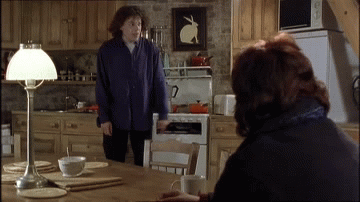
9 notes
·
View notes
